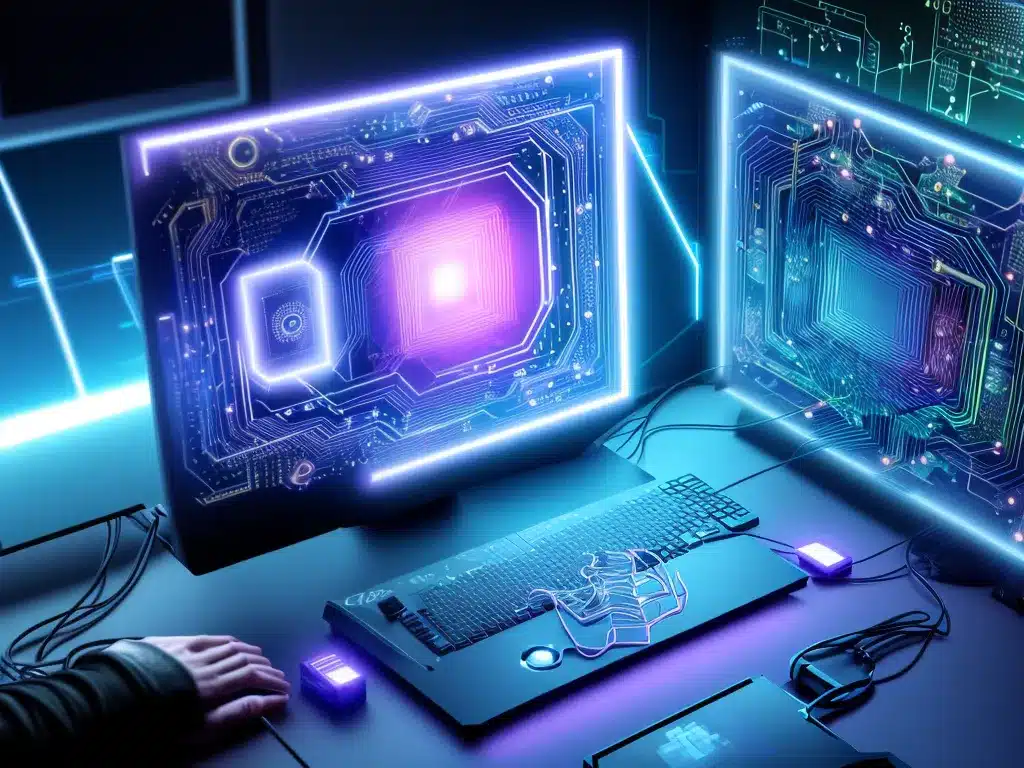
I have long been fascinated by the intersection of quantum computing and computer graphics. As someone with experience in both fields, I believe there is tremendous potential in bringing these two domains together. In this article, I will explore the ways in which quantum computing may revolutionize computer graphics in the years ahead.
An Introduction to Quantum Computing
Quantum computing utilizes the strange properties of quantum mechanics to perform calculations in profoundly different ways compared to classical computing. Qubits are the basic units of information in a quantum computer, analogous to bits in a classical computer. However, qubits can exhibit the phenomenon of superposition, meaning they can represent both 0 and 1 simultaneously. Quantum algorithms take advantage of this property to explore many potential solutions in parallel. When the superposition collapses through measurement, it produces the optimal solution.
Some key potential benefits of quantum computing include:
-
Faster processing – Certain tasks like optimization and simulation can be sped up exponentially on quantum computers through massive parallelism.
-
Powerful simulation – Quantum computers can efficiently simulate quantum systems, useful for chemistry, physics and more.
-
Enhanced security – Quantum cryptography allows for ultra-secure communication channels.
While the technology is still emerging, companies like IBM, Google and Microsoft are racing to build practical, large-scale quantum computers.
The Role of Computer Graphics
Computer graphics focuses on generating digital visual content and imagery. This includes 3D modeling, animation, visualization, and special effects. Computer graphics rely on extensive computations in areas like:
-
Rendering – Creating 2D images from 3D models. Ray tracing accurately simulates light behavior but is computationally intensive.
-
Physics simulation – Mimicking real-world physical interactions between objects like cloths, fluids, and explosions. Extremely complex mathematically.
-
Procedural generation – Algorithmically generating textures, terrains, foliage and other assets. Can be resource intensive.
As you can see, computer graphics involve very heavy computation and could benefit immensely from the parallel processing power of quantum computing. Next, let’s look at some specific applications.
Quantum Computing Applications in Computer Graphics
Here are some promising ways quantum computing could be a game-changer for computer graphics:
Faster Rendering and Ray Tracing
Ray tracing creates highly realistic lighting effects by simulating individual light rays bouncing around a scene. However, ray tracing is very computationally expensive and requires tremendous processing power. Quantum algorithms like quantum linear systems solvers could significantly accelerate ray tracing calculations. This can enable more photorealistic real-time graphics.
More Immersive Simulations
Quantum physics naturally lends itself to simulating quantum systems. By harnessing quantum computers, we can create unprecedentedly realistic visual simulations of things like molecular dynamics, fluid flows, smoke, and clouds at a macro level. This allows more immersive and interactive visualizations.
Procedural Material Generation
Procedurally generating varied, realistic materials like wood, marble, and fabric textures requires solving complex parametric models. Quantum optimization algorithms could automate this process and produce high-quality procedural materials efficiently.
Lifelike Animation and Physics
The animation of hair, cloths, and human figures, as well as simulating rigid and soft body dynamics, requires solving many physics equations. Quantum simulation techniques can drastically speed up the math involved in animating lifelike movements and interactions.
Enhanced Virtual and Augmented Reality
Photorealistic lighting, convincing materials, realistic physics, and immersive environments enabled by quantum computing could significantly enhance experiences in virtual reality and augmented reality. Quantum computing will help deliver more responsive, natural interfaces.
Optimized 3D Modeling Pipelines
3D modeling involves tackling many complex, interdependent tasks like sculpting, unwrapping, texturing, rigging, and more. Quantum optimization algorithms could optimize these pipelines to drastically accelerate the overall modeling process.
As you can see, quantum computing may very well take computer graphics to unprecedented heights in terms of realism, creativity, and user experience. While the full potential remains exploratory, this is undoubtedly a match made in heaven between two extraordinarily powerful domains of computing. The next decade will prove transformative as quantum graphics technologies move from research to reality. I’m excited to see quantum computing supercharge computer graphics with capabilities we can only begin to imagine today.












